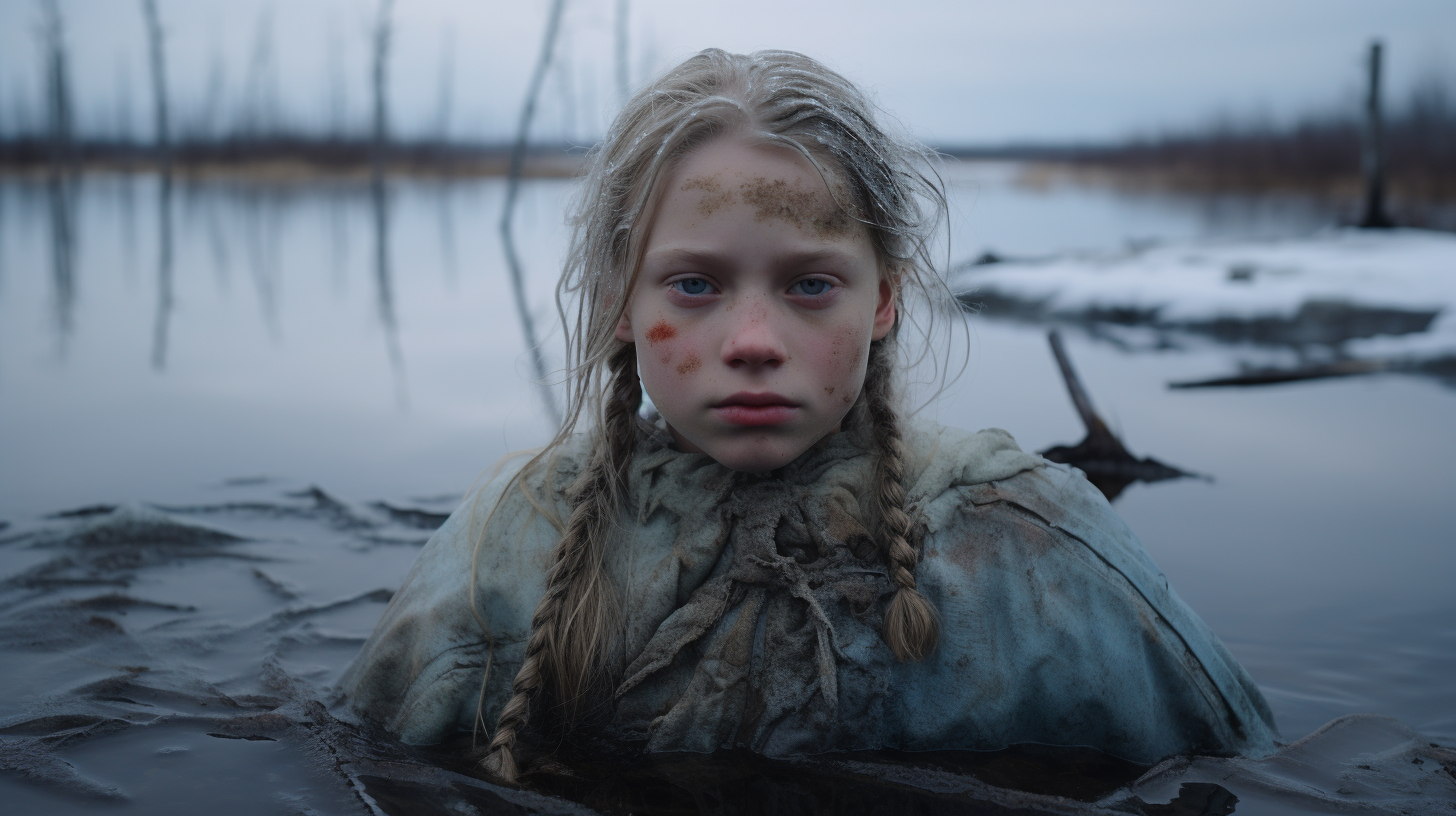In a desolate expanse, where once lay a mosaic of frost and loam, the ancient, icy ground exhales its final gasp. This is the permafrost, a cornerstone of the cryosphere, now singing its swan song as we stand witness to ‘Permafrost’s Last Breath’. A frozen archive of time immemorial, the permafrost carries within it the secret whispers of epochs gone by, now tragically surrendering to the insidious creep of warmth.
The permafrost—a term both arcane and misleading—belies its implicit permanence. Encompassing nearly a quarter of the Northern Hemisphere’s landmass, this once steadfast layer is succumbing to an undeniable thaw. As it withdraws its icy touch from the earth, it reveals the remnants of a prehistoric life and releases long-captivated greenhouse gases, turning this frigid graveyard into a potent contributor to the very heat that spells its demise.
Researchers estimate that the permafrost embodies twice as much carbon as our present atmosphere. Its erosion heralds a feedback loop of climate acceleration. Methane, a gas over 25 times as potent as carbon dioxide in trapping heat, is joining the atmosphere’s ranks at alarming speeds, and with it, we chart a course for climatic upheaval. Our scientific odyssey has now stumbled upon methane ebullition, a phenomenon where methane bursts from the permafrost in violent effervescence.
Yet, amidst the discourse of thaw and release, often overlooked are the cultural calamities it foreshadows. Whole communities, deeply rooted in the Arctic’s fabric, stand to lose their ancestral homes, not to conquests or migration, but to the very land turning liquid beneath their feet. The permafrost thaw is not just an environmental debacle; it is a crisis of heritage, of memories seething in the melting frost.
In the face of such adversity, flora and fauna too flicker in uncertain limbo. The disruption of ecosystems confined to the chill of the northern realms becomes a chronicling of mass diaspora or worse, silent extinction. As the Arctic fox scavenges for its final burrows, we observe a natural kingdom in peril, an elegy composed in defrosting soils.
But what of solutions in this Green Dystopia? Can a land that’s perpetually perishing beget innovation, or does it merely echo calls for action by rote? Some propose geoengineering miracles, orchestrations of science at grand scales to refreeze what’s been lost. Yet we carry skepticism like a latent frostbite—aware that our capacity for rejuvenation belies the tides we’ve set in motion.
Where we sought ice, we now find only liquid memories, each trickle a vignette of the lush arctic mosses and towering boreal forests, now facing contrary destinies. Whispers of the Taiga cry in the night—a rustling reminder that not all ruins lie beneath the sun. It’s the millennium’s climate requiem, an elegy not for what we have lost, but for what we can no longer regain.
Closing this Arctic anthology, one must not shy away from the existential inquiry such change prompts. The permafrost’s last breath is not simply a vanishing act to be mourned in silence, but a cataclysmic cadence stirring the consciousness of humankind. As it’s now known, the once-cryptic whispers of the permafrost narrate not just of the past, but admonish the complacency of the present. A final, icy gust—one that perhaps chills us to action, or freezes us in fatalistic acknowledgement of the dystopia we fostered.
